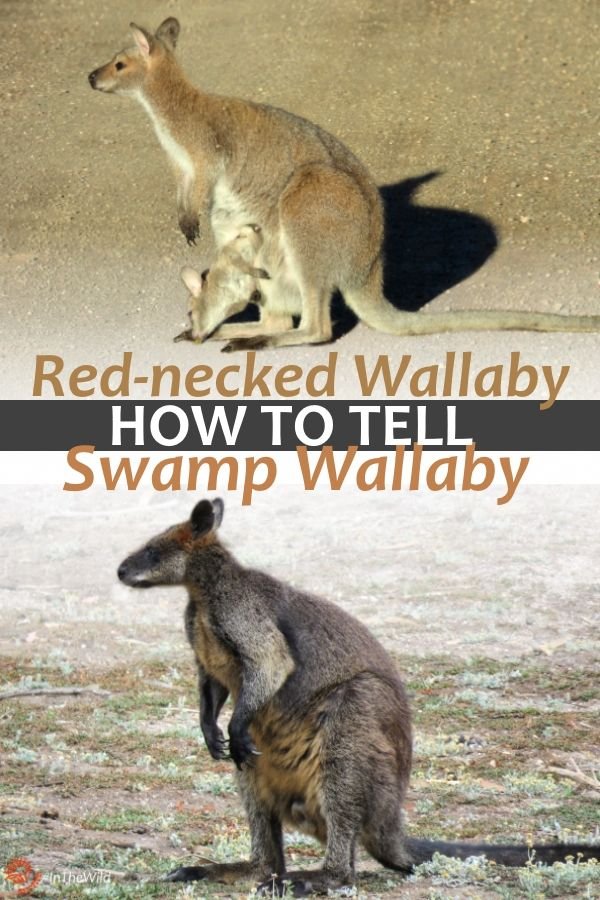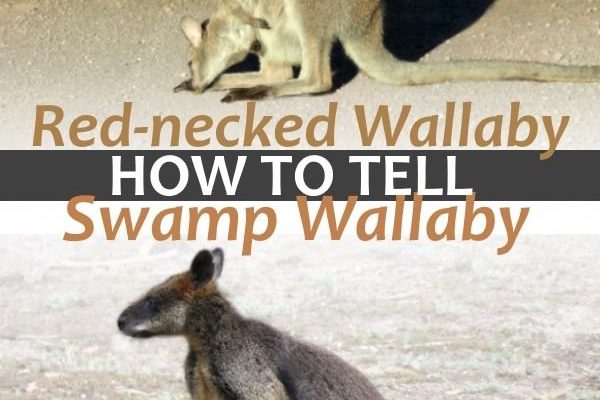
Let’s dive into the world of animals similar to the swamp wallaby. Think of it like exploring a family tree where you meet distant relatives who share some unique characteristics. Whether it’s the way they hop, their diet, or where they live, each one has its own special twist. I’ll guide you through some of these creatures, showing you how they compare and helping you understand what makes each of them unique.
1. Eastern Grey Kangaroo
The Eastern Grey Kangaroo is probably the closest relative to the swamp wallaby. Both are marsupials and share a similar habitat in eastern Australia. The Eastern Grey is larger, standing about 4 to 5.5 feet tall and weighing between 110 and 150 pounds. In contrast, swamp wallabies are much smaller, typically weighing around 35 to 50 pounds.
You might spot an Eastern Grey hopping across a field or resting under a tree. They have long limbs and powerful tails that help with their balance. Their fur is a soft grey, which can look quite similar to the swamp wallaby’s brownish-grey coat. But here’s the thing: while swamp wallabies have a stockier build and shorter legs, Eastern Greys have a leaner appearance.
Their social behavior differs too. Eastern Greys often form large groups known as mobs, while swamp wallabies tend to be more solitary or found in small family units. Next time you’re in Australia, keep an eye out for both—you’ll see how they interact with their environment differently!
2. Black Wallaby
Another similar creature is the Black Wallaby. These guys are medium-sized marsupials, and they share a lot of traits with swamp wallabies. Black wallabies are mostly found in the eastern parts of Australia and are known for their black or dark brown fur.
What sets them apart from swamp wallabies is their size and coloration. Black wallabies are generally smaller and have a more slender build. Their dark fur gives them a striking appearance, making them stand out against the lush greenery of their habitat. If you’re trying to identify one, look for their long tails with a distinctive white tip, which is quite different from the swamp wallaby’s bushy tail.
Both animals have similar diets, munching on grasses and leaves, but black wallabies tend to be more versatile and have been known to nibble on fruits and flowers as well. So, if you ever spot one, you might just see it enjoying a fruity snack!
3. Agile Wallaby
Meet the Agile Wallaby, another close relative of the swamp wallaby. These animals also have a compact body and strong hind legs, making them excellent jumpers. Agile wallabies are slightly larger than swamp wallabies, usually weighing around 30 to 50 pounds.
What makes the Agile Wallaby unique is its distinct coat pattern. They usually have a brownish-grey fur with lighter underbellies and darker stripes along their back. This coloration helps them blend into their grassland and bush habitats. When observing them, you might notice their quick movements and playful behavior, which can be quite delightful to watch.
In terms of diet, Agile Wallabies prefer grassy areas, similar to swamp wallabies. However, they also love browsing on shrubs and herbs. If you’re ever hiking in Australia, keep an eye out for these nimble creatures!
4. Rufous Wallaby
The Rufous Wallaby, also known as the red-necked wallaby, is another interesting cousin. While they do share similarities with swamp wallabies, you can often identify them by their reddish-brown fur, which is livelier than the swamp wallaby’s darker coat. Their size is comparable, standing about 3 to 4 feet tall and weighing around 30 to 50 pounds.
Rufous wallabies are often found in wooded areas and open grasslands, making them slightly more adaptable to varied environments than swamp wallabies. While both animals are herbivores, the Rufous wallaby enjoys a more diverse diet, including leaves, fruits, and even small flowers.
You might find it intriguing how these wallabies prefer to hang out in pairs or small groups, unlike the more solitary swamp wallaby. This social nature can be a joy to observe.
5. Tammar Wallaby
Another fascinating relative is the Tammar Wallaby. Found mainly in Australia and Tasmania, Tammars are easy to spot because of their smaller, stocky build, much like swamp wallabies. They typically weigh between 20 to 40 pounds and have a sandy-brown coat that can resemble a swamp wallaby’s fur.
What’s unique about Tammar wallabies is their adaptability to different habitats. They can thrive in forests, grasslands, and even urban areas, which highlights their versatility. When it comes to diet, Tammars enjoy grasses and shrub leaves, much like their swamp relatives, but they can also graze on cultivated plants in more populated regions.
The key distinguishing factor is their smaller size and light coloration compared to swamp wallabies. If you spot a Tammar wallaby, pay attention to their playful nature; they’re known to hop around with enthusiasm, making them a joy to observe.
6. Wallaroo
The Wallaroo is another intriguing marsupial that can be found in Australia. These creatures are stocky and muscular, and you might confuse them with swamp wallabies at first glance. Wallaroos typically weigh between 50 to 100 pounds and have a robust build.
What sets them apart is their fur. Wallaroos have coarse, shaggy hair that comes in various color patterns, including grey, brown, and black. Their larger size and bulkier appearance can make them easier to identify. When you see a Wallaroo, you might also notice how they occupy rocky outcrops or steep hills, unlike the gentle wetland habitats of swamp wallabies.
Wallaroos are known to be more solitary animals, often seen grazing alone or in pairs. Their diet is also similar, mostly consisting of grasses and shrubs. If you’re ever trekking through the Australian bush, keep an eye out for these muscular critters!
7. Koala
You might be surprised to see the Koala on this list, but bear with me! While they look quite different, both koalas and swamp wallabies are marsupials native to Australia. Koalas tend to be much larger, weighing between 15 to 28 pounds, and have that adorable, fuzzy appearance that makes them instantly recognizable.
Koalas are eucalyptus munchers, feeding primarily on eucalyptus leaves, while swamp wallabies stick to grasses and shrubs. Their habitats also differ, with koalas preferring tall eucalyptus trees. If you see a swamp wallaby hopping along the ground, just know a koala could be napping high up in the branches above!
What’s fascinating is the way both animals have adapted to their environments. Their ability to thrive in Australia’s unique ecosystems shows the diversity of marsupials.
8. Quokka
Last but not least, let’s talk about the Quokka. These small marsupials are often hailed as the “happiest animal on Earth” because of their cute, smiling faces. Quokkas are much smaller than swamp wallabies, typically weighing around 5 to 11 pounds.
They have a rounded body and short tail, making them look quite different from swamp wallabies. Their fur is a brownish color, similar to swamp wallabies, but with a much fluffier appearance. Quokkas are predominantly found on Rottnest Island near Perth, Australia, while swamp wallabies have a broader range in the mainland wetlands.
Quokkas primarily feed on grasses and leaves, which is similar to the diet of swamp wallabies. Their social nature and curiosity can lead to adorable encounters, making them a delight for tourists and photographers alike.
In conclusion, while the swamp wallaby is a remarkable animal in its own right, it’s fascinating to explore the family of marsupials it’s related to. Each of these animals has its own quirks and characteristics. The next time you think of swamp wallabies, remember their extended family—each one telling a unique story in the wild.
Whether you’re a wildlife enthusiast or just curious about these fascinating creatures, gaining insight into their similarities and differences will deepen your appreciation for Australia’s rich biodiversity. So go ahead, keep exploring and learning about the animal kingdom—it’s more interconnected than you might have realized!

